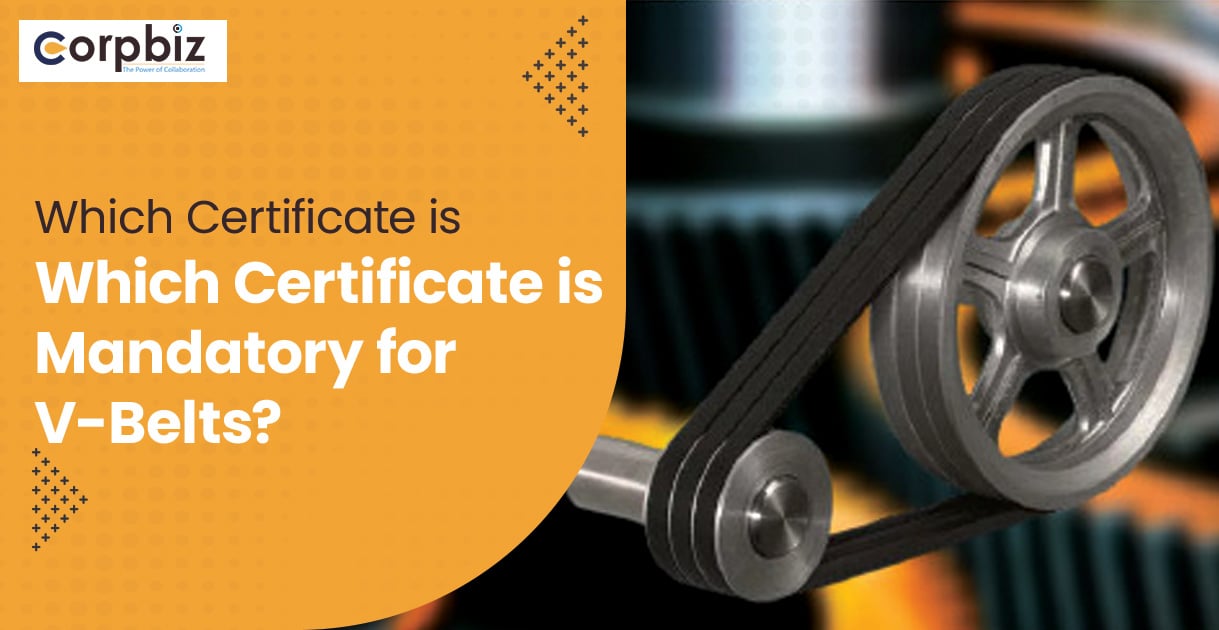In this fast-growing world, the competition in business has become very high; there is no scope for lacking somewhere at any point. When it comes to the quality of products and services, they need to be perfect and achieve zero defects.
For that, businesses need ZED (Zero Defect Zero Effect) certification to make their business a successful venture. In this post, we will discuss how to achieve zero defects and how important it is for any business.
Let’s read it out:
What is Zero Defects?
Philip Crosby initially used the term “zero defects” in his 1979 book “Quality is Free.”
An approach to problem-solving known as “zero defects” propagates the idea that mistakes are unacceptable and that everyone should “do things right the first time.” The premise is that by adopting a zero defect attitude, you can boost revenues through higher customer satisfaction and profits by removing the cost of failure.
According to Crosby, there are no expenses related to problems of subpar quality when there are no flaws, so quality becomes unrestricted.
“Zero defects” is believed to be a movement, a philosophy, or a way of thinking. It’s not a programme, and there aren’t any clear instructions or guidelines to follow. The fact that zero faults may be applied to any environment, business, profession, or sector may explain its success.
Zero Defects and Zero Environmental Impact: A Connection
On the 68th Independence Day, our respected Prime Minister, Shri Narendra Modi, pleaded with India’s MSMEs to rely on “zero defects” and ensure their products have “zero environmental impact.” Certification got its start with this.
It stated: “We ought to produce goods so that they are flawless and we never receive our exported goods back.” The products we produce must have no adverse effects on the environment.
Global manufacturers and investors take note. You have a fantastic opportunity in India. The government has clarified that it would support manufacturing as a catalyst for sustained expansion. However, for this to occur, several crucial elements need to coincide with this new endeavour. This new ecosystem is ready for success, from ensuring enterprises can operate efficiently to using competent people resources and high-quality raw materials.
Strategy to Achieve Zero Defects
A quality management strategy called the Zero Defect Strategy aims to avoid and eradicate errors at every stage of the manufacturing process. The fundamental idea is straightforward but highly effective: the objective is to guarantee that goods or services are created accurately and error-free the first time around.
This approach necessitates a mental shift away from only finding and correcting flaws once they arise and towards avoiding them from occurring in the first place.
Principles to Achieve Zero Defects
The core principles to achieve zero defects are mentioned below-
- Continuous Improvement: Continuous improvement serves as the foundation for the Zero Defect Strategy. It motivates businesses to evaluate and improve their procedures regularly to reduce the possibility of errors.
- Prevention over Detection: This approach emphasises implementing policies that prevent problems from occurring rather than using quality control procedures to find flaws after they’ve already happened.
- Employee Involvement: Employees at all levels are actively implementing The Zero Defect Strategy. They are urged to take responsibility for the calibre of their work, suggest enhancements, and locate possible causes of errors.
- Data-Driven Decision-Making: This approach uses data analysis to find trends, the sources of errors, and opportunities for enhancement. Organisations can improve their operations by making well-informed decisions using data-driven insights.
Benefits of Strategies to Achieve Zero Defects
Some of the significant benefits of strategies to achieve zero defects are mentioned below-
- Improved Customer Satisfaction: Providing goods or services without flaws increases client happiness and loyalty. Clients may rely on the company to continuously maintain their high standards.
- Cost Savings: Finding and correcting flaws can be costly. By avoiding problems, organisations save money on rework, warranty claims, and customer complaints.
- Enhanced Efficiency: Processes are streamlined, and inefficiencies are decreased when defects are prevented, making operations run more smoothly.
- Excellent Reputation: Businesses that regularly provide flawless goods gain a solid standing as reliable and high-quality suppliers in the marketplace.
Challenges in Implementing the Zero Defect Strategy
There are numerous challenges in the pathway of implementing the zero defect strategy. Some of the prominent ones are pointed below-
- Cultural Shift: The organisation’s culture must change to implement a zero defect philosophy. Workers must accept that preventing flaws is preferable to fixing them after the fact.
- Resource Allocation: To guarantee the prevention of faults, putting the strategy into practice may include spending money on technology, process enhancements, and training.
- Complex Processes: Because some businesses’ processes are intricacy-laden and unanticipated factors may occur, reaching zero faults might be especially difficult.
- Unrealistic Expectations: Although perfect defect elimination is the ideal, this may not always be possible for every process or product.
What are the Key Components of the Defect-based Certification?
When ZED Certification is followed correctly, it offers an abundance of advantages. The following considerations make up the essential elements:
Benefits & Incentives
Because it understands the importance of achieving greater Zero Defect Zero Effect (ZED) Certification levels, the Ministry of Micro, Small, and Medium Enterprises (MSME) provides MSMEs with several perks and incentives.
These initiatives aim to support MSMEs, which are regarded as the foundation of the Indian economy, in their expansion and advancement. The Ministry wants to help MSMEs raise their competitiveness, raise quality standards, and advance the country. To that end, it supports MSMEs.
Training Programmes
A thorough grasp of BIS and NPC will be provided to stakeholders, including consultants and MSME assessors, through appropriate training based on MSME sustainable (ZED) Certification.
Evaluation and Accreditation
MSMEs, or small and medium-sized businesses, will be awarded certification levels after fulfilling the requirements specific to their industry. The certification that was requested will award these tiers.
Marketing of Brands:
Your MSME will be exhibited and advertised nationwide once it receives the certification.
Consequently, each of these elements plays a part in assisting you in obtaining certification.
How this Certification Boosts Quality & Competitiveness?
ZED certification is an endorsement of zero defect, zero effect that helps MSMEs maintain sustainable practices and motivates them to preserve ZED’s integrity. These goals include- Encouraging MSMEs to minimise adverse effects by manufacturing and building high-quality items using modern and cutting-edge technologies to achieve high productivity.
Implementing ZED procedures and appreciating the work of MSMEs that are successfully operating encourages the MSME to pursue higher certification levels by offering various forms of support. MSMEs work to improve the community by advising the government on many policy-related issues and rules about this sector.
We are utilising Zero Defect certification to spread awareness of the ZED Concept among the target audience. Establishing a ZED manufacturing ecosystem boosts competitiveness and enables exports. It has, therefore, been able to concentrate on ZED goals thanks to these goals.
14 Steps to Quality Improvement
Quality improvement is a matter of concern for several businesses. However, businesses focus on the same. Some of the steps to quality improvement are as follows-
- Quality should be the management’s priority.
- It is necessary to establish quality improvement teams and include a senior representative from each department on each team.
- Measurement procedures that can identify any existing or possible problems with quality
- Determine the price of subpar quality.
- Increase each employee’s knowledge of quality
- Take steps to address quality concerns.
- Keep an eye on the quality improvement process and form a group to eliminate errors.
- Supervisors ought to receive training in improving quality.
- Keep days without any flaws.
- Motivate every worker to set personal objectives for quality enhancement.
- Encourage staff members to discuss any quality-related roadblocks with management.
- Acknowledge the participants’ efforts
- Establish high-quality councils
- It is essential to keep improving quality improvement by repeating the process.
What is a Defect in Quality Control?
Quality control specialists generally categorise defects into three basic groups: minor, major, and critical. The group into which a defect falls depends on its severity.
A product that doesn’t meet requirements or specifications would be a flaw in your supply chain. Either a minor problem that wouldn’t necessarily prevent the product from functioning but would nevertheless indicate that it isn’t of the most outstanding calibre or a serious flaw that would likely result in a recall.
Three Types of Defects
The three crucial types of defects are mentioned below-
- Minor – modest defects are typically more modest flaws with little bearing on the item’s shape or functionality. Most consumers wouldn’t even notice minor flaws in a product and are unlikely to return the item for a minor issue.
- Major – Major flaws are more dangerous than minor ones since they deviate significantly from the buyer’s specifications and have the potential to adversely impact the product’s functionality, performance, or appearance. Customers may decide to return the product due to these apparent flaws.
- Critical- Of the three defect classes, catastrophic defects are the most dangerous since they render the product utterly useless and put the user at risk. As a result of these flaws, businesses risk product liability claims, litigation, and product recalls.
Conclusion
The Zero-Defect Strategy is a philosophy that influences how businesses approach quality and continuous improvement, not just a theoretical idea. Companies can save money, improve their reputation, and give customers reliable goods and services by emphasising prevention over remediation. The advantages of a zero-defect culture are indisputable despite specific difficulties.
Adopting this approach calls for cooperation, devotion to quality, and commitment. Organisations that aim for excellence in their processes and products take their employees on a journey that changes how they operate and gives them a sense of pride and direction.
Frequently Asked Questions
What does “zero defects” mean in a business context?
A quality management concept known as “zero defects” seeks to provide the highest quality and customer satisfaction by eliminating faults or defects from products or services.
Why is achieving zero defects critical for businesses?
Reaching zero defects improves customer happiness and loyalty, lowers waste, lowers the cost of rework or recalls, and improves product quality—all of which help the company’s reputation and profitability.
What are the fundamental principles of zero defects?
The central tenets include Employee involvement, Employee prevention over inspection, Continuous improvement, and Strict quality control procedures. The aim is to cultivate a culture of quality awareness across the entire organisation.
How can businesses implement a zero defects strategy?
Establishing defined quality objectives, offering thorough employee training, implementing quality management systems (such as Six Sigma or Total Quality Management), and continuously monitoring and improving processes are some ways businesses may implement a zero defects approach.
Isn’t Zero Defects an unrealistic goal?
Although reaching perfect zero flaws may not be feasible, pursuing it establishes a high bar and encourages further development. Defect rate reductions of any size can have a big impact on customer happiness and quality.
How can this approach be applied to service industries?
Service industries can also adopt the Zero Defects mindset. Standardising practices, guaranteeing consistent service delivery, and reducing errors in client contacts would be the main priorities in this situation.
How can technology assist in achieving zero defects?
Technology can assist in early problem identification, real-time process monitoring, and data provision for continuous improvement. Examples include automated inspection systems, predictive maintenance software, and quality management platforms.
What are the long-term benefits of maintaining a zero defects approach?
Long-term advantages include Increased client loyalty and trust, Lower defect costs, a more competitive market position, higher staff morale, and Steady business growth and profitability.
Read our article: ISI Mark Certification For Consumers And Manufacturers









